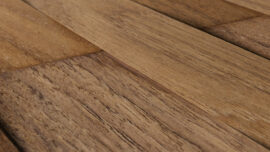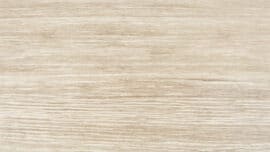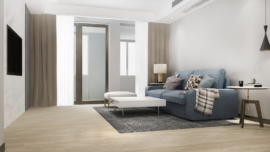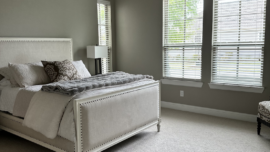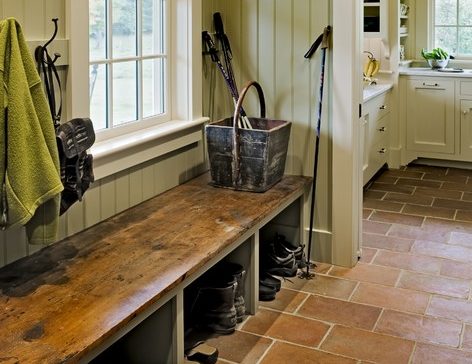
Choosing the Best Mudroom Flooring: An Contractor’s Expert Tips
Picture this: you come home after a long day, covered in mud, and your shoes are dripping with rainwater. Now, imagine stepping into a mudroom that not only keeps the mess contained but also complements your home’s style and is easy to clean. A well-designed mudroom is more than just an entryway; it is a functional and organized space that plays a vital role in maintaining cleanliness and order in your home.
Our goal with this blog is to empower homeowners with valuable insights and expert tips to make the best flooring choices for their mudrooms. We understand that the options can be overwhelming, and that’s why we are here to provide you with all the information you need to create a mudroom that not only functions efficiently but also elevates the overall aesthetic of your home.
The Best Mudroom Flooring Options
We’ll guide you through top choices like porcelain tiles, luxury vinyl planks (LVP), laminate flooring, and sealed wood, providing insights and considerations to help you make an informed decision. Say goodbye to muddy messes and hello to a well-designed mudroom that enhances your home’s organization and aesthetics!
Porcelain and Ceramic Tiles
Porcelain and ceramic tiles are an excellent choice for mudroom flooring due to their exceptional water resistance, making them highly durable and easy to clean. With their wide range of colors and patterns, these tiles offer versatile design options to suit any home’s style.
They can handle heavy foot traffic and occasional spills without losing their charm, making them a reliable and low-maintenance choice for busy households. Additionally, their slip-resistant options enhance safety in the mudroom, providing an added layer of protection for you and your family.
Advantages
- Water Resistance: Porcelain and ceramic tiles are water-resistant, making them easy to clean and maintain, perfect for mudrooms exposed to dirt and moisture.
- Design Versatility: With a wide range of colors, patterns, and designs, tiles allow you to find the perfect style that complements your home’s aesthetics.
- Durability: Tiles are known for their long-lasting durability, making them ideal for high-traffic areas like mudrooms.
Disadvantages
- Grout Maintenance: The grout lines between tiles can be prone to staining and require regular cleaning and maintenance.
- Temperature Sensitivity: Tiles can feel cold underfoot during colder months, which might not be the most comfortable sensation, especially in the morning.
- Hardness: The hardness of tiles might not be ideal for those who spend long periods standing in the mudroom, as it may lead to discomfort over time.
Luxury Vinyl Planks (LVP)
Luxury Vinyl Plank (LVP) is an excellent choice for mudroom flooring due to its remarkable combination of water resistance and realistic appearance. As a low-cost alternative to hardwood, LVP offers the beauty of wood without the drawbacks of water damage or warping, making it perfect for mudrooms exposed to moisture and dirt.
Its exceptional durability allows it to withstand heavy foot traffic and impacts from shoes and gear, ensuring your mudroom floor stays pristine for years. With a wide variety of styles and finishes available, LVP offers endless design possibilities to create a stylish and inviting entryway that complements your home’s overall aesthetic.
Advantages
- Waterproof: LVP is water resistant, making it an excellent choice for mudrooms prone to spills and moisture.
- Realistic Appearance: Luxury vinyl planks mimic the look of natural hardwood, providing an aesthetic appeal without the drawbacks of real wood in wet environments.
- Durability: LVP is highly resilient against wear and tear, making it suitable for busy mudrooms and ensuring longevity.
Disadvantages
- Quality Variation: Not all LVP products are created equal, and lower-quality options may be susceptible to issues like warping or fading over time.
- Subfloor Preparation: Proper subfloor preparation is crucial for a smooth installation, as any imperfections could potentially affect the appearance and performance of LVP.
- Installation: While some homeowners opt for DIY installation, a professional installation may be necessary to ensure optimal results and avoid potential problems.
Shop Luxury Vinyl Flooring (LVP) here.
Laminate Flooring
Laminate flooring is a fantastic choice for mudroom flooring due to its cost-effectiveness and water-resistant options. As a durable and budget-friendly material, laminate offers homeowners an affordable solution without compromising on quality. With a wide range of styles and designs available, you can easily find laminate that suits your mudroom’s unique style and complements your home’s overall decor. Its water-resistant properties make it suitable for mudrooms that may experience occasional spills or wet shoes, ensuring your floor remains in excellent condition even with daily use.
Advantages
- Budget-Friendly: Laminate flooring offers cost-effective options for mudrooms, making it an attractive choice for those on a budget.
- Wide Range of Styles: Laminate comes in various styles, allowing you to find the perfect flooring that suits your home’s design and theme.
- Fade-Resistance: Laminate is resistant to fading from sunlight, ensuring your mudroom flooring retains its vibrant look over time.
Disadvantages
- Wear Layer Thickness: The durability of laminate heavily depends on the wear layer thickness, with thinner wear layers being more susceptible to scratches and wear.
- Water Resistance Level: While laminate can handle occasional spills, excessive water exposure can cause damage, making it less suitable for consistently wet environments (Read more on what to do if your laminate has water damage)
- Quality: Choosing low-quality laminate might lead to a shorter lifespan and the need for early replacement, making it important to invest in a reputable product.
Sealed Wood Flooring
Sealed wood flooring is a great choice for mudroom flooring because it adds a touch of warmth and elegance to the space. I love the natural beauty and unique grain patterns of wood that can enhance the overall aesthetics of your mudroom.
When properly sealed, wood can handle some moisture exposure, making it suitable for mudrooms that may occasionally get wet. With regular maintenance and care, sealed wood flooring can provide a timeless and inviting atmosphere, transforming your mudroom into a welcoming entryway that adds value and charm to your home.
Advantages
- Warmth and Elegance: Sealed wood flooring adds a touch of warmth and elegance to a mudroom, creating a welcoming and inviting ambiance.
- Some Moisture Resistance: Properly sealed wood can handle some moisture exposure, making it suitable for mudrooms that may occasionally get wet.
- Natural Beauty: Wood offers natural beauty and unique grain patterns that can enhance the overall aesthetics of your mudroom.
Disadvantages
- Maintenance: Regular maintenance is essential to ensure the seal remains intact and effective against moisture, neglecting which could lead to water damage and other issues.
- Water Resistance Limitations: While sealed wood can handle some moisture exposure, it is not as water-resistant as other flooring options, and prolonged exposure to standing water or excessive moisture could result in warping and other damage.
- Initial Cost: The initial cost of sealed wood flooring tends to be higher than some other materials, making it less budget-friendly for some homeowners.
Best Types of Wood for Mudroom
When it comes to choosing the best types of wood for a mudroom, certain wood species stand out for their durability, water resistance, and overall performance in high-traffic areas. Here are some of the top wood options that I, as a flooring expert, recommend for your mudroom:
- Oak: Oak is a popular choice for mudrooms due to its exceptional durability and resistance to wear and tear. It can handle heavy foot traffic and impact from shoes and outdoor gear without showing signs of damage. Additionally, oak has a beautiful grain pattern that adds a touch of natural elegance to your mudroom’s ambiance.
- Maple: Maple wood is another excellent choice for a mudroom floor. It is known for its hardness, making it highly resistant to scratches and dents. This feature ensures that your mudroom flooring will maintain its pristine appearance even with constant use. Maple also comes in various finishes, allowing you to achieve the desired look for your mudroom.
- Hickory: Hickory is renowned for its toughness and strength, making it a suitable option for busy mudrooms. I appreciate hickory’s ability to resist moisture to some extent, making it more water-resistant than many other wood species. Its distinctive grain pattern adds a touch of character to your mudroom.
- Brazilian Cherry (Jatoba): Brazilian cherry, also known as Jatoba, is a hardwood with excellent durability and a rich, reddish-brown color. I recommend Brazilian cherry for its resistance to wear, ensuring that your mudroom floor remains beautiful and sturdy for years to come. However, it’s essential to note that this wood darkens over time due to sunlight exposure, adding a lovely patina to your mudroom.
- Acacia: Acacia wood is becoming increasingly popular for its striking appearance and resilience. I recommend acacia for its unique grain patterns and natural variations in color. It has inherent water-resistant properties, making it suitable for mudrooms that may experience occasional spills.
- Teak: Teak is well-known for its water-resistant qualities, making it a fantastic choice for areas prone to moisture, such as mudrooms. I appreciate teak’s natural oils that help protect it from water damage and decay. Its warm golden color and smooth texture add a touch of luxury to your mudroom.
- Ash: Ash wood is a durable option that can handle the demands of a busy mudroom. Its light color and subtle grain pattern create a clean and inviting atmosphere. I recommend ash for its ability to withstand heavy foot traffic without losing its beauty.
Understanding the Mudroom’s Unique Requirements
High-Traffic Area: Importance of Durability and Wear Resistance
Mudrooms are undoubtedly one of the busiest areas in any home. From family members constantly coming in and out to pets running in with muddy paws, the flooring must be durable enough to withstand heavy use without showing signs of wear and tear. Choosing a flooring material with excellent durability is essential for a mudroom that can handle the hustle and bustle of daily life.
Exposure to Dirt, Moisture, and Debris: Need for Water-Resistant Materials
It’s no secret that mudrooms are exposed to dirt, moisture, and debris brought in from the outdoors. This constant exposure can take a toll on traditional flooring materials. That’s why opting for water-resistant flooring is crucial to protect your mudroom from potential damage and ensure that it remains a functional and appealing space.
Safety Considerations: Slip-Resistant Options for a Mud-Free Environment
Safety should never be compromised, especially in areas that are prone to getting wet and muddy. Slip-resistant flooring options offer an added layer of protection, reducing the risk of accidents in your mudroom. With the right flooring, you can create a mud-free environment that gives you peace of mind and keeps your family safe.
Buying Tips for Choosing the Right Mudroom Flooring
There are many factors to consider when choosing the best mudroom flooring for your home.
As a flooring expert, I’m here to guide you through the process of selecting the perfect flooring for this essential and high-traffic area of your home. With the following buying guide, you’ll be well-equipped to make an informed decision that suits your lifestyle, budget, and design preferences:
- Consider Mudroom Requirements:
Before exploring flooring options, consider your mudroom’s unique requirements. As a high-traffic area exposed to dirt, moisture, and debris, durability and water resistance are paramount. Look for flooring materials that can handle heavy use and occasional spills without losing their charm.
- Evaluate Material Options:
There are several flooring materials suitable for mudrooms, each with its advantages and disadvantages. Porcelain and ceramic tiles offer excellent water resistance and design versatility, while luxury vinyl planks (LVP) provide realistic wood-like appearances with superior durability. Laminate flooring offers budget-friendly options with a wide range of styles, and sealed wood flooring adds warmth and elegance to the space. Understanding the pros and cons of each material will help you narrow down your choices.
- Focus on Water Resistance:
I cannot stress enough the importance of water resistance in a mudroom. Opt for materials that can handle occasional spills and dampness without damage. LVP, porcelain tiles, and certain sealed wood options are particularly adept at resisting moisture.
- Assess Durability and Wear Resistance:
Mudrooms endure constant foot traffic, so durability and wear resistance are key factors to consider. Look for materials known for their ability to withstand heavy use and impacts, such as porcelain tiles, oak, maple, and hickory wood. These options will maintain their beauty even under the rigors of daily use.
- Consider Safety and Slip-Resistance:
Safety is paramount in a mudroom, where wet and muddy shoes can pose slip hazards. I recommend choosing materials with slip-resistant properties to minimize the risk of accidents. Textured tiles, certain LVP options, and sealed wood with appropriate finishes can offer enhanced traction and safety.
- Budget and Long-Term Value:
As you plan your mudroom upgrade, consider your budget and the long-term value of your investment. While some materials may have a higher upfront cost, they may offer better durability and longevity, reducing the need for early replacements and saving money in the long run. Assess the overall value and benefits of each material to make a financially sound decision.
- Align with Home Aesthetics:
Your mudroom is an extension of your home’s overall style, so it’s essential to choose flooring that complements your interior design. I recommend selecting colors, patterns, and textures that harmonize with your home’s aesthetic, creating a cohesive and visually appealing space.
- Seek Professional Advice:
I encourage you to seek advice from a reputable flooring company. (If you’re near Frisco, TX, check us out). Their expertise can help you navigate the vast array of options and guide you towards the best choice for your mudroom. A professional installation ensures that your new flooring is correctly laid, optimizing its performance and longevity.
- Read Reviews and Consider Maintenance:
Before making a final decision, read reviews and testimonials from other homeowners who have installed the flooring options you are considering. Pay attention to maintenance requirements and ensure that you are willing to commit to the necessary care to preserve the beauty and functionality of your chosen flooring.
- Request Samples:
I recommend requesting samples of your shortlisted flooring materials. This allows you to see and feel the texture, color, and quality firsthand, helping you make a confident decision.
By following this buying guide, you’ll be well-prepared to choose the best flooring for your mudroom. Remember to consider the unique needs of your mudroom, prioritize water resistance and durability, and seek professional guidance for an outstanding and long-lasting upgrade.
Mudroom Flooring Maintenance and Care Tips
Maintaining and caring for your mudroom flooring is essential to ensure its longevity and preserve its appeal. I’ve compiled some practical maintenance and care tips to keep your mudroom floor looking pristine for years to come:
Regular Cleaning
Adopt a routine cleaning schedule to keep your mudroom floor free from dirt, debris, and moisture. Sweep or vacuum the area regularly to remove loose particles and prevent scratches. For hard flooring like tiles or LVP, use a damp mop with a mild cleaning solution suitable for the specific material. Avoid using harsh chemicals that could damage the flooring.
Immediate Spill Cleanup
I cannot stress enough the importance of promptly cleaning up spills in the mudroom. Whether it’s water, mud, or any other liquid, wipe it up immediately to prevent it from seeping into the flooring and causing damage.
Use Doormats and Rugs
Place doormats at the entrance of your mudroom to trap dirt and moisture before they reach your flooring. I recommend using high-quality doormats both inside and outside the mudroom to provide double protection. Additionally, consider using rugs in high-traffic areas to further protect the floor and add a touch of style.
Avoid Sharp Objects
I advise against dragging or sliding sharp objects, heavy furniture, or appliances across the floor. These actions can lead to scratches and scuffs, compromising the beauty and integrity of the flooring.
Use Furniture Protectors
For any furniture or equipment in your mudroom, consider using felt or rubber protectors on their feet. These accessories prevent scratches and dents caused by frequent movement and weight.
Trim Pet Nails
If you have pets that access the mudroom, keep their nails trimmed regularly. This simple step prevents potential scratches on your flooring, especially if you have wood or laminate floors.
Prevent Standing Water
I emphasize the importance of preventing standing water on your mudroom floor. Prolonged exposure to moisture can cause damage, especially for wood and laminate flooring. If water spills or wet items are left on the floor, promptly wipe them dry.
Avoid Harsh Cleaners
When cleaning your mudroom floor, avoid using harsh or abrasive cleaners that could harm the finish or sealant. Stick to manufacturer-recommended cleaning products, or opt for gentle, eco-friendly solutions to protect your flooring.
Regular Inspections
I recommend conducting regular inspections of your mudroom floor. Look for signs of wear, scratches, or damage, and address any issues promptly to prevent them from worsening.
Follow Manufacturer’s Guidelines
Each flooring material may have specific care instructions provided by the manufacturer. I advise following these guidelines to maintain the warranty and ensure proper care for your flooring.
Conclusion
We hope that this comprehensive guide has provided you with valuable insights and tips for selecting the perfect flooring for your mudroom. From considering the unique requirements of your mudroom to exploring top flooring options and preparing for installation, each step is essential to creating a functional, beautiful, and durable mudroom.
While this blog offers a wealth of information, each home or business is unique, and working with a professional flooring company can ensure personalized advice and solutions that fit your specific needs.
Your mudroom is more than just an entryway; it is a space that enhances the organization and cleanliness of your home or office. Choosing the right flooring not only elevates the functionality and safety of your mudroom but also adds value and aesthetic appeal to your entire space.
So, let’s get started on creating the perfect mudroom flooring that will stand the test of time and bring joy to your everyday life. Contact us today!


